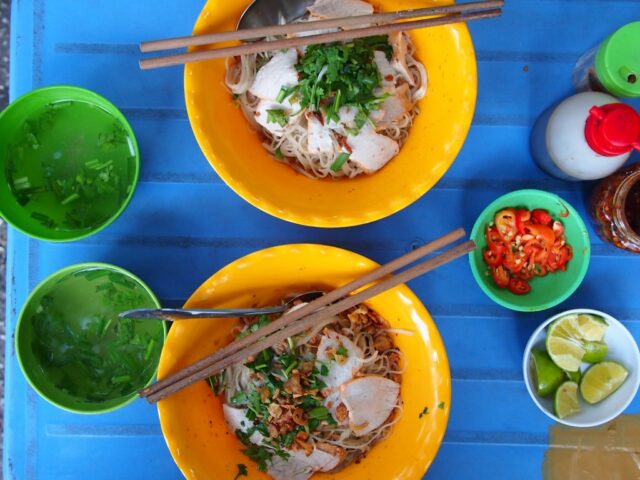Gluten-free diets have become increasingly popular in recent years, but not for the reason you might think. The rising popularity of the diet is largely due to the fact that gluten-free foods are often more expensive than regular ones, and people who want to eat a gluten-free diet often can’t afford to pay more for their food.
It wasn’t until recently that gluten-free actually became a buzzword of sorts, as more and more people begin to identify themselves as gluten-intolerant and want to avoid what they feel is the side-effects of the gluten-free diet.
The cost of living in Vietnam can be high, but it doesn’t have to be expensive. As someone who suffers from Celiac Disease, finding that right Vietnamese restaurant is the first step towards avoiding the hassle of carrying around anti-allergen food. Over the next couple of years, the budget for travelling in Vietnam should continue to rise. However, while the cost of living continues to go up, it seems that it’s also becoming easier to find gluten-free food.

Every well-traveled person has a list of things they must do before they leave on their next trip. While it’s tempting to simply pack a bag of clothes and go, it’s also important to ensure you have the right travel insurance to protect your investment. So, should you buy a travel insurance policy or travel insurance from a travel guide? Which sites are the best? Here’s the honest answer: it depends on where you plan to travel.. Read more about how to say gluten free in vietnamese and let us know what you think.
If I had to eat just one cuisine for the rest of my life, I would pick Vietnamese cuisine. I spent many winters traveling throughout the nation, spending time in Saigon and Hanoi, Hue and Danang, and eating as much as I could every day.
As a celiac, I discovered that eating gluten-free in Vietnam was not only feasible, but also delightfully simple. Once I figured out which components to avoid, I stuck to street food where I could see meals being prepared and experiment to my heart’s delight.
The following information will assist travelers in navigating Vietnam while avoiding gluten. I’m extremely sensitive, therefore I’ve avoided some meals at places where the oil may have been polluted. The advantage of street food is that many booths are one-stop shops, and if anything is fried on the spot, the oil is utilized just for that item.
Eating in Vietnam was not only enjoyable, but it also exemplified why I like writing about food. It’s not only about the flavor, but also about the experience of sharing a meal while sitting in a blue plastic chair in the middle of pandemonium.
I hope that this book, together with my extensive Saigon Street Food Guide, will make your trip to Vietnam interesting, tasty, and full of unforgettable views.
Vietnam’s coronavirus infections have been on the increase since May 2024, and steps have been put in place to assist stop the spread. As a consequence, the restaurants and motels listed below may be closed or offer limited menus. Please check here for the most recent information on the COVID-19 measures in place in Vietnam.
Do you already have a gluten-free translation card in mind? You may purchase my Vietnamese card, as well as cards from Italy, Japan, Greece, Spain, and other countries, here!
Gluten-free tapioca noodles, huh?
Overview of Gluten-Free Living in Vietnam
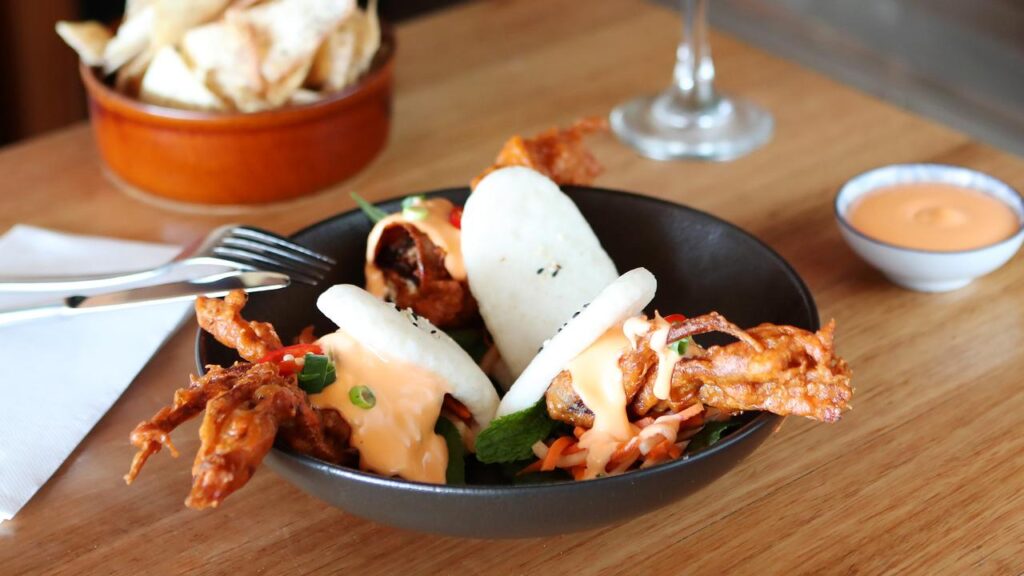
I was diagnosed with celiac disease in the early 2000s, but when I began Legal Nomads, I seldom mentioned it. To be honest, I didn’t believe people would be interested, and it was something I was struggling with a lot while traveling, but I kept it to myself.
When I met readers, several said they had celiac disease, so I began making sure I included information for celiacs and gluten-free dieters. This gluten-free Vietnam guide was created with the goal of not only assisting other celiacs, but also encouraging people to dine in the nation since the cuisine is really some of the finest you’ll ever taste.
For celiacs, Saigon was a dream come true. Inadvertently “glutened” in Hanoi, where wheat is used more often, but not in the South — Saigon and the Mekong — Cross-contamination is a concern for me since I am gluten-intolerant, but the soy sauce in Southern Vietnam has been OK for me. Unlike soy sauces found in the West or in China and Japan, this one does not mention wheat as an ingredient.
It’s unclear if this implies there’s no gluten in the sauce, but I didn’t feel ill from eating soy sauce meals on the street.
There is considerable debate regarding soy sauce in general, with some firms claiming that fermenting it eliminates the gluten. True, fermenting gluten prevents antibodies from detecting hydrolyzed gluten, but the peptide chains and gliadin are still there. For those who are interested, Nima Sensor has a full blog entry on it.
Because tourist-driven (read: nicer) eateries would import wheat-y soy sauce from elsewhere, I decided to eat anything on the street, which worked out well.
A Gluten-Free Translation Card Customized for Vietnam
This card was the second in a series of gluten-free guidelines and local language cards, and I’m looking forward to working with celiacs and translators to create comprehensive and safe cards for us to use on the road. Each card in the guide has been prepared using celiac-specific information, cross-contamination warnings, and double-checked translation from native speakers.
Note: You may buy the card from a reputable 3rd party site that utilizes https, so you can be certain that your information is secure. I am not collecting emails or personal information from those who purchase the card.
What makes this Vietnamese card unique?
On my trips, I tried many different translation cards and still felt sick. I’m probably more sensitive than other celiacs, but even a little quantity of tainted frying oil or soy sauce in the meal may make me sick for days. Not to mention the joint discomfort later in the week! This card is unique in that it not only lists all of the local food names for what to eat and what to avoid, but it also mentions the risk of cross contamination.
On the purchasing page, you may get an English version of the card so you know exactly what you’re getting.
Thank you to To Tra for mobilizing the help of her whole family to translate this card as completely as possible without overloading the waitstaff.
Vietnamese Gluten-Free Dishes and Snacks
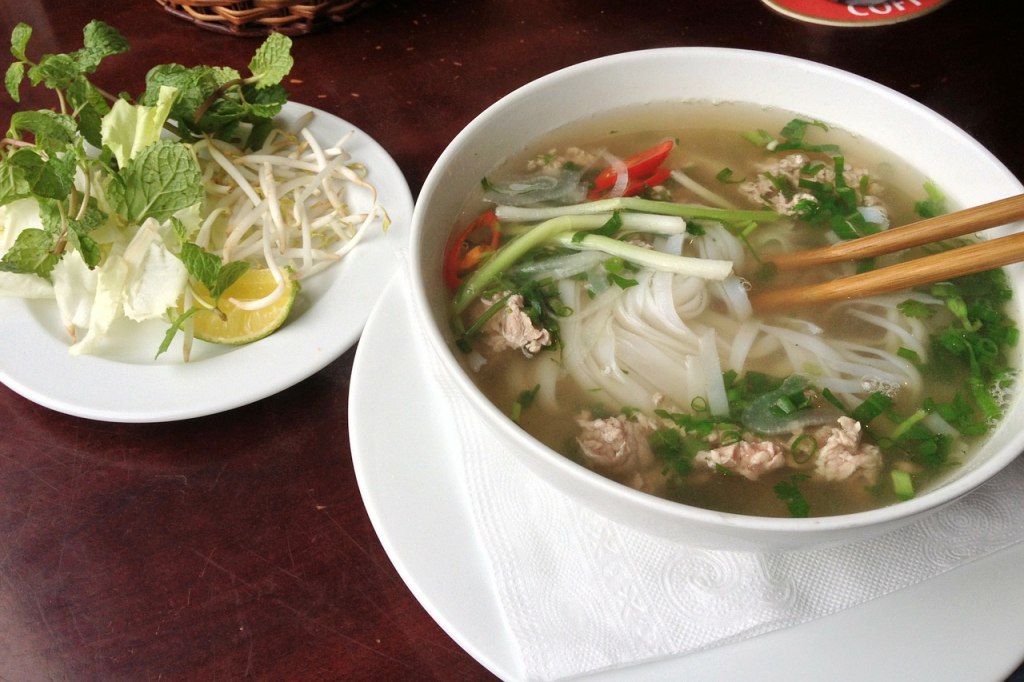
My knowledge of Vietnamese food was limited before I visited the country. Even today, after so many years in Saigon, I’m sure I’m missing some of my favorite meals. The eagerness with which people share their meals with you is one of the most gratifying aspects of traveling in Vietnam. Understanding the basic components that go into each meal is the greatest defense a celiac has against worry caused by the illness. This is made simple for you in Vietnam.
One of the most useful features of Vietnamese cuisine is how detailed the dish titles are. What we term pho in the West is not just a soup name; it also refers to the noodle that is utilized in the soup. The same can be said for a slew of other meals, such as the litany of bun or banh dishes, which allude to the starch that distinguishes them from others.
Please check my VERY lengthy food guide to Saigon Street food for pictures and a more detailed explanation of each of the meals listed below — this should be read in conjunction with the current gluten-free Vietnam guide to give you the most up-to-date information before your visit.
Condiments, such as plum or hoisin sauce with pho, should be selected with care, although the most frequent condiment of all, fish sauce, was gluten-free to the max.
However, certain fish sauces aren’t healthy, according to Andrea Nguyen’s article on Asian gluten-free eating:
It’s worth noting that fish sauce sometimes contains a gluten-containing component called hydrolyzed wheat protein. I haven’t seen this fish sauce used very much in Vietnam, but it’s worth investigating if you have celiac disease. “Protein lua mi” is the Vietnamese name for this component.
Fortunately, I did not have any negative responses to fish sauce during my winters in Vietnam, but it’s worth noting in case it becomes more prevalent.
It’s worth noting that eating gluten-free in Hanoi proved more challenging for me than in the central or southern parts of Vietnam, owing to the greater usage of soy sauce in Hanoi and northern Vietnamese cuisine than in the south, where fish sauce reigns supreme.
To remain or to leave, there’s enough of fish sauce.
Vietnamese Gluten-Free Dishes
- Whether you’re ordering banh xeo or banh khot, be sure to inquire if the batter contains wheat and rice flour. Although the recipe calls for rice flour, some establishments use pre-made mixtures, which are unsafe for celiacs. I’ve cooked banh khot several times while I lived in Vietnam, and you can find the recipe here.

- Hu tieu (tapioca) noodles are used in hu tieu Nam Vang, a morning soup that was one of my favorites. It’s worth noting that some hu tieu soups don’t really include hu tieu noodles. Hu tieu soups may be served wet or dry, with dry noodles stir-fried or gently pan-fried and the broth on the side, as I described in my Saigon Street Food Guide. There are three kinds of noodles frequently served with hu tieu soup: (1) mi (egg noodles; see below for a list of UNSAFE meals where these wheat-based noodles are included in this guide), (2) hu tieu noodles (springier), and (3) pho or bun noodles (made with rice flour). We celiacs are only allowed to eat (1).
- Fresh spring rolls wrapped in rice paper are known as goi cuon. In North America, they’re known as summer rolls.
- Mi quang — an exception to the “mi / my” category, mi quang noodles are composed of rice and served with a lesser quantity of turmeric-colored broth. They’re a little broader than pho noodles and very tasty!
- Noodles made from mung bean flour. Mien noodles are often available at pho shops, and mien ga, a chicken noodle soup with mung beans as the noodle basis, was one of my favorite meals to have when I had a cold.
- Pho (rice flour or rice starch) – although the soup is often referred to as pho, the term originates from the rice flour noodle used in the dish.
- Bun (rice flour or rice starch) – a variety of bun soups exist, including bun bo, bun mam, bun ca, bun thang, bun moc, bun mang vit, and many more. Please, for those of you who grew raised in the West, discover the incredible range of Vietnamese soups available beyond pho. Many of these soups do not include soy sauce, but it is always a good idea to inquire. When I had a cold, I would make bun moc, a pork and mushroom meatball soup with rice noodles, to help me feel better.
- Banh canh (tapioca and rice noodles), which are often offered in banh canh cua, a delicious crab noodle soup that I had for breakfast near my Saigon apartment.
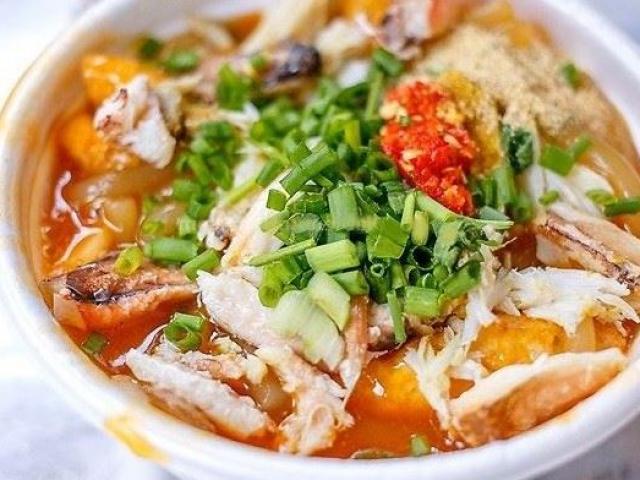
- gio cha gio (fried spring rolls, wrapped in rice paper) These are known as nem in Vietnamese restaurants in the north. It’s worth noting that celiacs dining in Hanoi, and increasingly in the south, aren’t usually served with rice paper as a wrapping. If you’re not in Saigon, be wary of northern nem that have been dipped in bread crumbs before being fried. Nowadays, it’s crucial to inquire if the fried rolls are prepared using banh trang (rice paper), won ton, or flour wrappers.
- Com (rice) – com tam (broken rice), com suon (pork chop rice), com hen (baby clams rice) — com anything, actually. The com is safe in and of itself, but as with any protein meal, be sure the meat or fish was not marinated in a soy sauce-based marinade. Soy sauce was not widely available during my years in Southern Vietnam, but readers indicate that it is becoming more widely available.
- Chao long is a rice-based porridge containing offal such as lungs and intestines, as well as blood cubes, that is similar to congee. It’s not for everyone, but if you like your gruesome bits, you’ll love it. It’s worth noting that they typically come with bread on the side or sliced within, but you may opt out.
- Although oc is the official term for snails, an oc restaurant will offer a wide range of delectable seafood, including grilled scallops, lemongrass clams, and much more. These are often grilled or steamed, and I didn’t come across any breaded alternatives. Unlike Canada’s fried oysters and breaded scallops, I was able to sample nearly all of the seafood on offer at these booths, and it was delicious. Please read Vietnam Coracle’s Snails and Seafood guide for a primer.
- Lemongrass clams served on the street. It’s one of my favorite dishes.
Snacks from Vietnam that are gluten-free
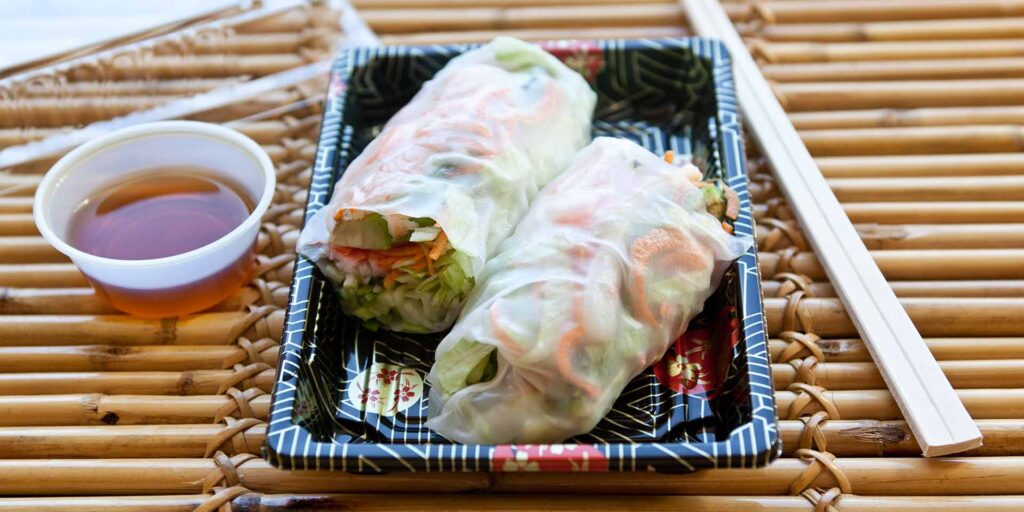
If I didn’t mention the snacks, I’d be remiss.
One of the most difficult aspects of being a celiac is that many nations’ “on the go” snacks include wheat. It’s understandable; sandwiches and pastries are both convenient methods to carry food without creating a mess. With the exception of Mexico, where corn snacks are ubiquitous, I’ve never been a fan of mid-meal nibbles.
That is not the case in Vietnam! I was never hungry when soups were scarce, thanks to banh trang nuong (grilled rice paper rolls), banh trang tron (rice paper shredded and mixed with quail egg, peanuts, chili oil, and green mango into a salad), and banh trang cuon (rice paper rolls with similar ingredients but rolled and cut into a bag). There was no wheat in any of these.
Banh trang nuong: a delectable gluten-free snack (as usual, check the condiments!)
In Vietnam, there are gluten-free hotels, bakeries, and shops.
- Unlike my previous guides, Vietnam has less gluten-free options, but that’s OK since you can prepare almost anything with a metric ton of rice noodles or banh. AirBnb is still the greatest option for people who prefer to cook at home. Otherwise, try street cuisine, like I did, or stay in a better hotel.
Da Nang has a gluten-free hotel.
Hyatt Regency Da Nang: According to Blends by Orly, the hotel’s restaurants were very accommodating to celiacs, making them gluten-free pumpkin bread (which was more like sponge cake) and adding, “The Green House offers gluten-free spaghetti at lunch and dinner as a substitute to all pasta dishes on the menu.” Indeed, the gluten-free pasta package is on display among the normal pastas, which is quite cool!”
In Hoi An, there is a gluten-free hotel.
According to many readers, the Four Seasons Nam Hai in Hoi An can completely accommodate celiacs. I didn’t try this one out since my trips are typically slow-travel, long-term roaming, but it is in line with other Four Seasons hotels throughout the globe. At that price, I certainly hope so! Gluten-free bread and meals were made by La Siesta Hoi An for celiac readers.
Gluten-Free Restaurants in Saigon / Ho Chi Minh City
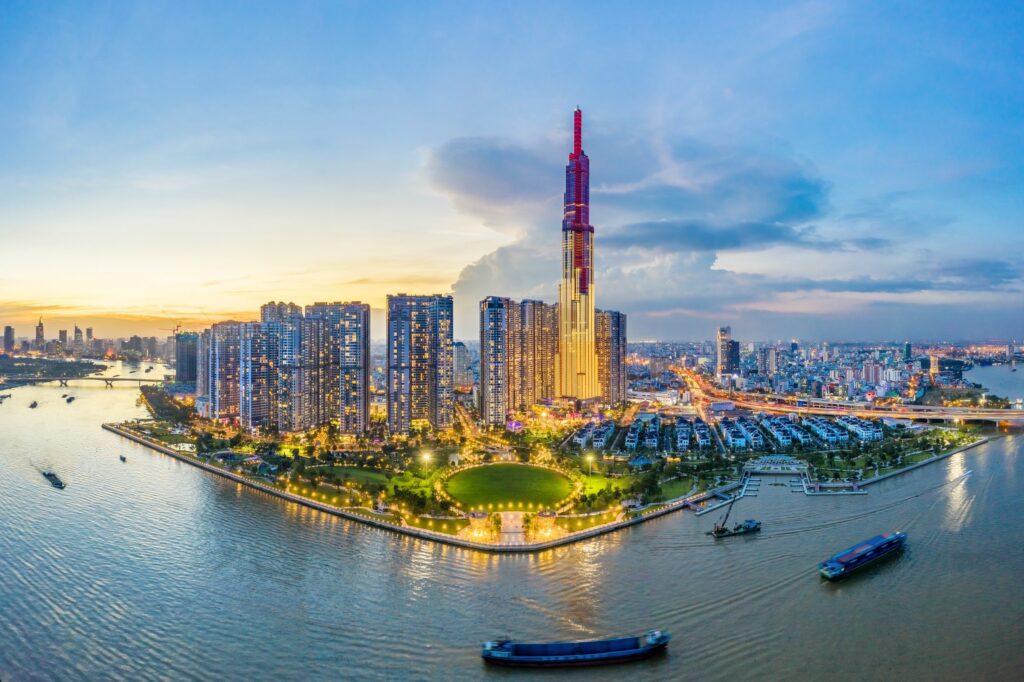
- Rawberry is a refined sugar-free, gluten-free, dairy-free bakery that has made celiacs happy for years.
- In the same city, in District 2, there’s also Gluten Free Gourmet, which serves celiac-friendly savory and sweet dishes. They also provide gluten-free goods to a number of restaurants for inclusion on their menus.
- The Vintage Emporium not only offers gluten-free bread to use as a replacement for their meals, but they are also aware of celiac illness and can adjust the menu appropriately. It’s a Sydney-style café with a full bar and delectable brunch fare.
- Do you have a strong desire for Mexican cuisine? Corn tortillas are used at Gringo Tacos, and the staff is aware with gluten free and cross contamination.
- When I lived in HCMC, I would bring my own gluten-free soy sauce (bought at L’Annam, below) and dine at one of Japantown’s many excellent sushi restaurants.
- Vietnam House offers a large menu with gluten-free choices and is a lovely setting for a dinner.
- If street cuisine intimidates you, try Den Long restaurant’s Vietnamese homecooked flavors. Wheat-containing products are clearly marked on the menu, and the staff is familiar with celiac disease and its limitations.
Hotels and Restaurants in Ha Noi that are gluten-free

- The Sofitel Legend Metropole Hanoi Hotel in Hanoi’s Hoan Kiem area offers a restaurant with properly labeled gluten-free dishes, as well as a chef who knows what to eat to keep celiacs safe. That’s always an option when in question.
- Food allergies, including celiac disease, are well-known and well-served at Hanoi Social House, according to LN readers.
- There’s also La Studio, a vegan restaurant with a lot of gluten-free options. Please double-check, since their soba noodles (for example) were not entirely made of soba and included wheat.
- Try Hanoi Taco Bar for a taste of Mexico; they create their own celiac-safe stone ground corn tortillas. Inquire about condiments used, such as any soy sauce or “salsa inglesa” that may include wheat, as you would at any restaurant.
- La Siesta Trendy, situated on Nguyen Quang Bich Street west of the Old Quarter, is a reader favorite among gluten-free hotels in Hanoi. The chef prepares unique morning delights. CLOSED.
- You can also follow Gluten Free Hanoi on Instagram for suggestions on where to go (and what to eat) while you’re in town.
In Vietnam, gluten-free products are available.
Most of the gluten-free goods I purchased were from L’Annam Gourmet, which has locations all across the nation.
In Vietnam, what isn’t gluten-free?
Don’t eat any of them!
This list is much shorter than many others, but it’s worth remembering the names – nui, my, won ton – so you know what to avoid when you encounter them on menus. These meals should likewise be avoided according to the Vietnamese card.
- nai (macaroni noodles)
- my noodle or mi (egg noodles with wheat)
- hu tieu won ton (egg noodle won ton) – nevertheless, hu tieu Nam Vang (tapioca noodle won ton) is acceptable since the broth isn’t seasoned with soy sauce.
- Vietnamese banh mi (bread, obviously)
- Deep-fried fish or meat, since they are often coated in flour beforehand.
- nem / cha gio in the north: the north of Vietnam uses more soy sauce from China, which contains wheat, and wheat-based wrappers rather than rice-based wrappers. You should double-check that the cuisine you eat in Hanoi and the north is gluten-free. Specifically, there is no soy sauce, the wrappers are made of rice if you are eating in and around Hanoi, and the nem is not made with wheat.
- As previously said, marinated meats fall into the “ask” category; it’s worth asking whether soy sauce was used in the marinade. Although the bowl pictured is from Saigon and the soy sauce used did not include wheat, soy is often used to marinade grilled meats used in bun bowls.
- Many Vietnamese gluten-free guidelines give Mexican restaurants a pass; but, in my experience, this is RARELY the case. Tortillas that are half wheat, half maize (learned this out the hard way), wheat tostadas, contaminated fryers, and more are among the problems I’ve discovered.
- Koki flour is a batter made with wheat flour that is more popular in Thailand than in Vietnam. It’s not going to work. Aside from cha gio and similar dishes in the north, I’d stay away from deep-fried foods throughout Asia.
Additional Vietnam-related reading

If you’re planning a trip to Vietnam, there are a number of excellent publications available to help you plan your trip. The nation has a complex past that involves wars, citizen movement, and a strong love of cuisine.
For additional historical context, here are some ideas:
My recommendations for food books are as follows:
Eat well and safely!
Please check here for the remainder of my celiac translation cards and instructions.
I am writing this to provide a comprehensive gluten free guide to Vietnam. I travel to Vietnam often, and it’s gotten to the point where I know so much about the country that I can make this blog post in my sleep. This post is made from the perspective of someone who lives in the U.S. and can’t consume gluten. You can still find many gluten free options in Vietnam, but please be aware of the fact that many restaurants in Vietnam will not have a gluten free menu.. Read more about gluten-free vietnamese recipes and let us know what you think.

